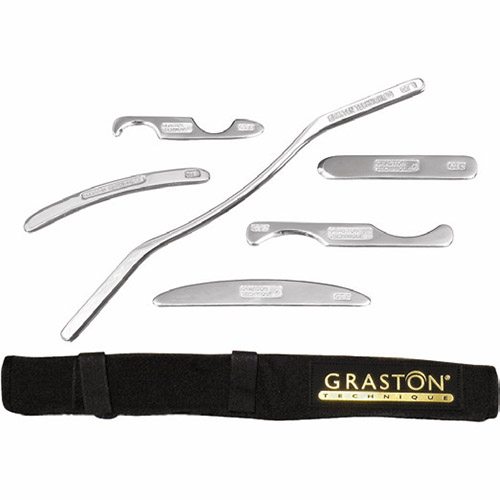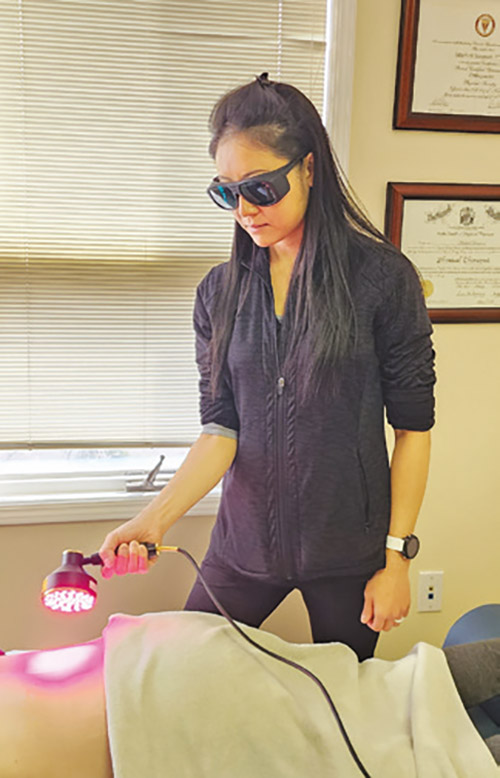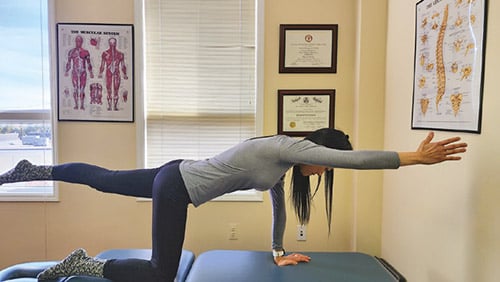
If you suffer from low back pain, you are not alone. It is estimated that up to 80% of people experience low back pain at some point in their lives. While there are many treatments available, physical therapy is noninvasive and is one of the most effective ways to alleviate low back pain. In this article, we will explore the various techniques and exercises used in physical therapy to help get your back on track and get you back to life.
There are several categories of treatment that physical therapists use to help with patients who have low back pain:
1. Manual therapy, including spinal mobilization and manipulation, and soft tissue mobilization (STM) to improve the mobility of joints and soft tissues.
2. Modalities like cold laser, ultrasound and electric stimulation to help reduce pain and inflammation in the affected area.
3. Spinal stabilization and flexibility exercises.
4. Education about how you can take better care of your back and maintain proper spinal alignment throughout your daily routine.
Hands-On Manual Therapy
Hands-on manual therapy is a key factor in achieving rapid and lasting relief from low back pain. Basic categories of manual therapy include joint mobilization/manipulation and soft tissue mobilization.

Joint mobilization is a gentle technique that can help relieve pressure on the spinal joints, improve range of motion and enhance spinal alignment and function.
Soft tissue mobilization (STM) is a type of manual therapy that focuses on the soft tissues of the body, including muscles, tendons and ligaments. STM can help improve circulation, reduce muscle tension and promote relaxation. By working on these soft tissues, physical therapists can help alleviate pain and stiffness in the lower back. Some examples of soft tissue mobilization are deep tissue massage, myofascial release and instrument assisted soft tissue mobilization (IASTM).
IASTM is a manual therapy technique used to treat soft tissue injuries and chronic pain. IASTM uses specially designed instruments to target problem areas in soft tissues. Since these tools have multiple shapes and sizes to adapt to different body areas, they can efficiently target specific areas to speed up the healing process. By applying pressure and friction to these areas, IASTM can help break up scar tissue and adhesions, increase blood flow and promote healing. Although the devices may look like Roman-era torture devices, the actual treatment is pleasant, and many patients find it to be relaxing and very beneficial.
Modalities (Cold Laser, Ultrasound, Electric Stimulation)
While most people who have gone to physical therapy are familiar with ultrasound and electric stimulation, many have not experienced cold laser as a therapeutic treatment.
Cold laser therapy or more precisely, photobiomodulation, is a noninvasive treatment that uses low-level lasers and LED diodes of red and near-infrared wavelengths of light to stimulate healing in the body. The lasers penetrate the skin and target the underlying tissues, promoting cellular regeneration and reducing inflammation. Cold laser therapy can be used to ease pain and promote healing in various conditions, including low back pain.
Spinal Stabilization Exercises
Core stabilization exercises are a vital component of physical therapy for low back pain. Your “core” includes your abdominal, back, hip, buttocks and pelvic muscles. It is extremely important to have a routine of core strengthening exercises to not only help recover from an episode of low back pain, but also to prevent future occurrences down the road. Out of all these muscles, three are most associated with maintaining a healthy back:
Transverse abdominis muscles (TrA) are located under your obliques. They form the front and sides of your abdomen, wrapping around to connect with tissues that run alongside the spine. The transverse abdominis stabilize the pelvis and lower back before you begin to move. They also pull your abdomen in toward your spine and maintain good posture.
Multifidus and erector spinae muscles run along your spine, providing stabilization, and promoting proper function of the vertebral joints. The multifidus muscles are among the smallest yet most “powerful” deep layer back muscles that give support to the spine. These muscles help to take the pressure off the vertebral discs, so that our body weight can be well distributed along the spine. The erector spinae are large muscles on both sides of the spine. They straighten your back and support side-to-side movement and play a key role in supporting the spine and maintaining good posture. By strengthening these muscles, physical therapists can help alleviate low back pain and prevent future injuries.


Some Examples of Core Stabilization Exercises
The beginner level stabilization exercises usually begin lying on your back in the “Hook Lying” position with both knees bent. The goal of this exercise is to find the “neutral” position of your back, by rotating the pelvis forward and back until the neutral position is found and then gently tightening the stomach muscles without going out of this position.
A higher-level progression is the “Dead Bug.” Lie on your back with your arms extended up towards the ceiling and your legs bent at a 90-degree angle. Slowly lower your right arm and left leg towards the ground, keeping your lower back pressed to the floor or in a neutral position. Repeat on the other side.
Another higher-level stabilization exercise is the “Bird Dog.” Start on your hands and knees, with your hands directly under your shoulders and your knees directly under your hips. Extend your right arm and left leg out straight, then bring them back in and switch sides.
Education
Lastly, education is an integral part of a physical therapy treatment session. Education would include things like how the patient should be maintaining proper spinal alignment with posture education; appropriate body mechanics for lifting; and ergonomics education, which consists of how to adjust chairs, desks and computer monitors to ensure proper alignment and reduce strain on the neck and back.
Mitch (Mordy) Simpson, PT, MSPT, OCS is the owner of Back to Health Physical Therapy located in River Edge, NJ. He is a board certified orthopedic specialist with over 25 years of experience as a physical therapist. Additionally, he is certified in IASTM(instrument assisted soft tissue mobilization) and is certified in Pilates for Rehabilitation. For more information please call 201-833-0234 or visit bthrehab.com













